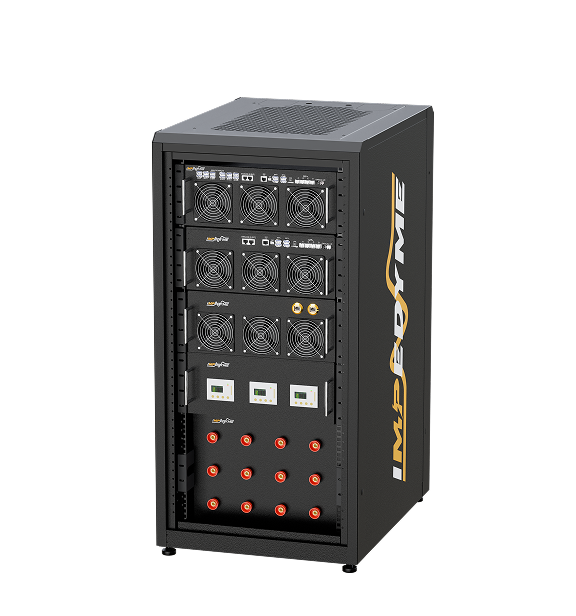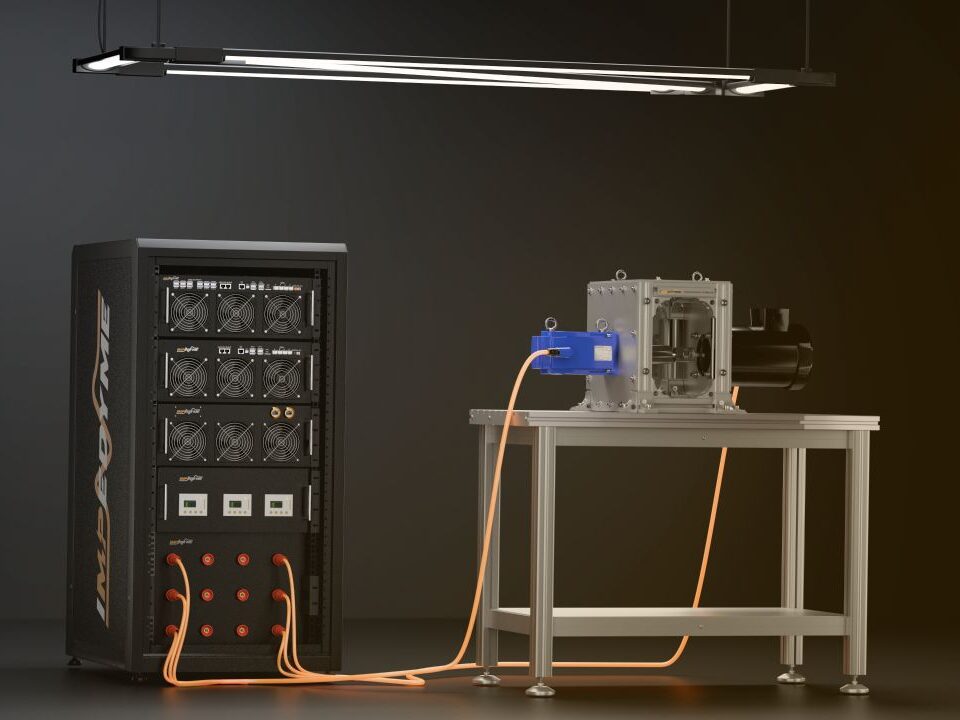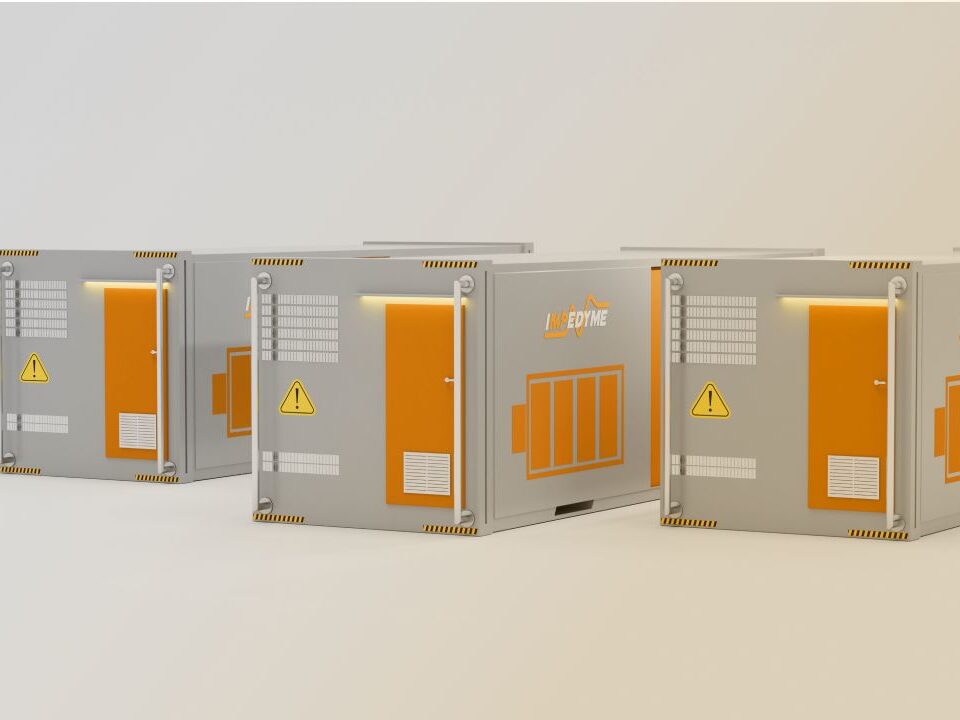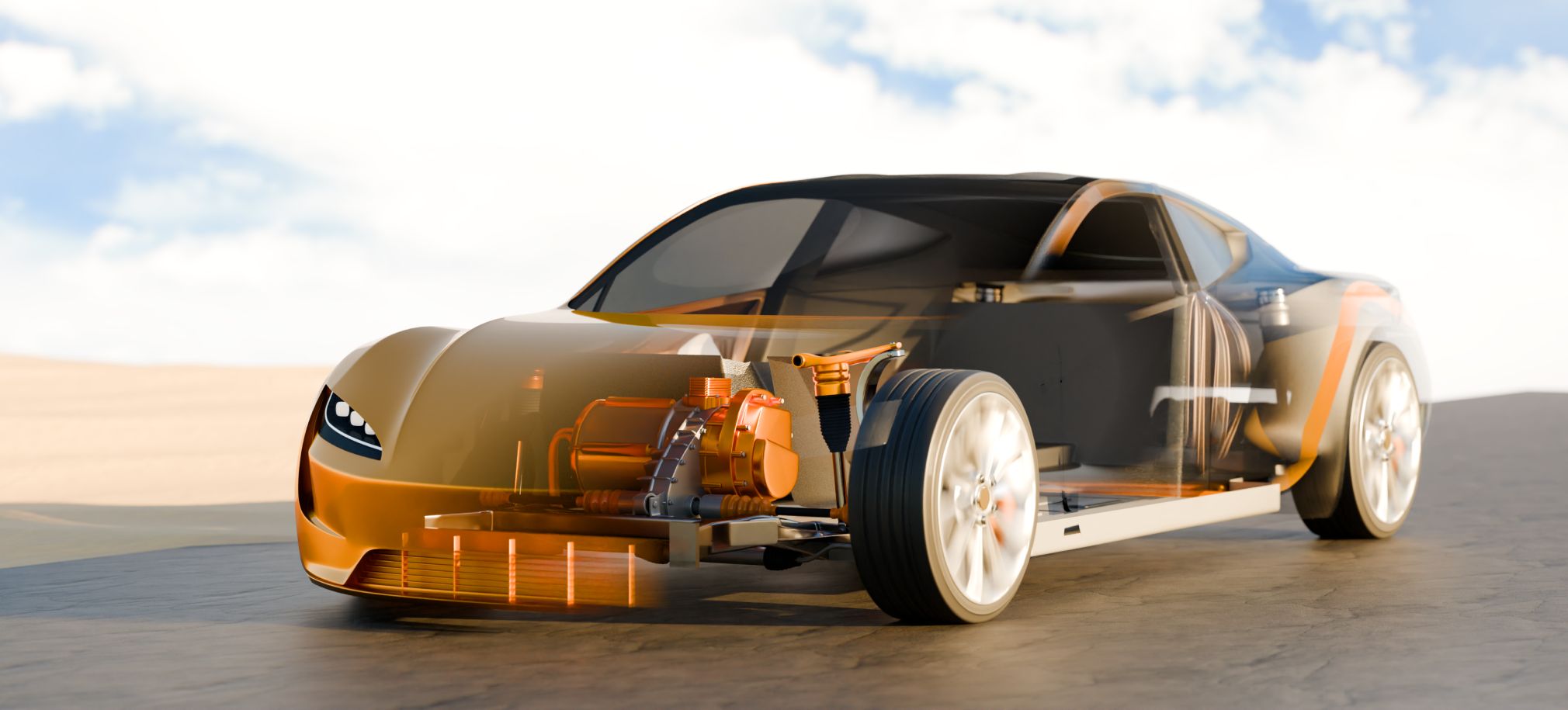
-
 Induction Motor
Induction Motor
-
 Automotive Electrical System Simulation
Automotive Electrical System Simulation
-
 DC/DC Bidirectional Converter
DC/DC Bidirectional Converter
-
 PWM Control for Brushless DC
PWM Control for Brushless DC
-
 BLDC Motor Control and Drive Simulation
BLDC Motor Control and Drive Simulation
-
 Electric Vehicle Fast Charger Simulation
Electric Vehicle Fast Charger Simulation
-
 DFIG Wind Turbine Simulation
DFIG Wind Turbine Simulation
-
 Dual Active Bridge
Dual Active Bridge
-
 EV Dynamometer Test Environment Simulation
EV Dynamometer Test Environment Simulation
-
 Electric Vehicle Simulation
Electric Vehicle Simulation
-
 Three-Phase Grid-Connected Inverter Using Direct-Q…
Three-Phase Grid-Connected Inverter Using Direct-Q…
-
 Three-Phase Grid-Connected Solar Photovoltaic
Three-Phase Grid-Connected Solar Photovoltaic
-
 Grid-Connected Rectifier
Grid-Connected Rectifier
-
 Grid-Tied Inverter System
Grid-Tied Inverter System
-
 Torque Control in a Hybrid Excitation Synchronous …
Torque Control in a Hybrid Excitation Synchronous …
-
 Wye-Delta Starting Circuit
Wye-Delta Starting Circuit
-
 IPMSM-Based Axle-Drive
IPMSM-Based Axle-Drive
-
 Simplified Parallel Hybrid Electric Vehicle
Simplified Parallel Hybrid Electric Vehicle
-
 Simplified Series Hybrid Electric Vehicle
Simplified Series Hybrid Electric Vehicle
-
 Series-Parallel Hybrid Electric Vehicle
Series-Parallel Hybrid Electric Vehicle
-
 Three-Phase Matrix Converter Simulation
Three-Phase Matrix Converter Simulation
-
 Venturini Modulation for Three-Phase Matrix Conver…
Venturini Modulation for Three-Phase Matrix Conver…
-
 Microgrid Frequency Regulation Using Vehicle-to-Gr…
Microgrid Frequency Regulation Using Vehicle-to-Gr…
-
 Three-Phase Modular Multilevel Converter
Three-Phase Modular Multilevel Converter
-
 Field-Oriented Control
Field-Oriented Control
-
 Interior Permanent Magnet Synchronous Generator
Interior Permanent Magnet Synchronous Generator
-
 Permanent Magnet Synchronous Machine
Permanent Magnet Synchronous Machine
-
 PMSM Rotor Angular Velocity
PMSM Rotor Angular Velocity
-
 PMSM-Based Electrical Traction Drive
PMSM-Based Electrical Traction Drive
-
 Maximum Power Point Tracking
Maximum Power Point Tracking
-
 Six-Phase Permanent Magnet Synchronous Machine
Six-Phase Permanent Magnet Synchronous Machine
-
 Synchronous Machine-Based Electrical Drive Simulat…
Synchronous Machine-Based Electrical Drive Simulat…
-
 Single-Stage Solar Inverter
Single-Stage Solar Inverter
-
 Three-Phase Cycloconverter Simulation
Three-Phase Cycloconverter Simulation
-
 Totem-Pole PFC Simulation
Totem-Pole PFC Simulation
-
 Twelve-Pulse Thyristor Rectifier
Twelve-Pulse Thyristor Rectifier
-
 Two-Wheeler On-Board Charger
Two-Wheeler On-Board Charger
-
 Vienna Rectifier Simulation
Vienna Rectifier Simulation
-
 High-Voltage Direct Current
High-Voltage Direct Current
-
 Wireless Power Transfer
Wireless Power Transfer
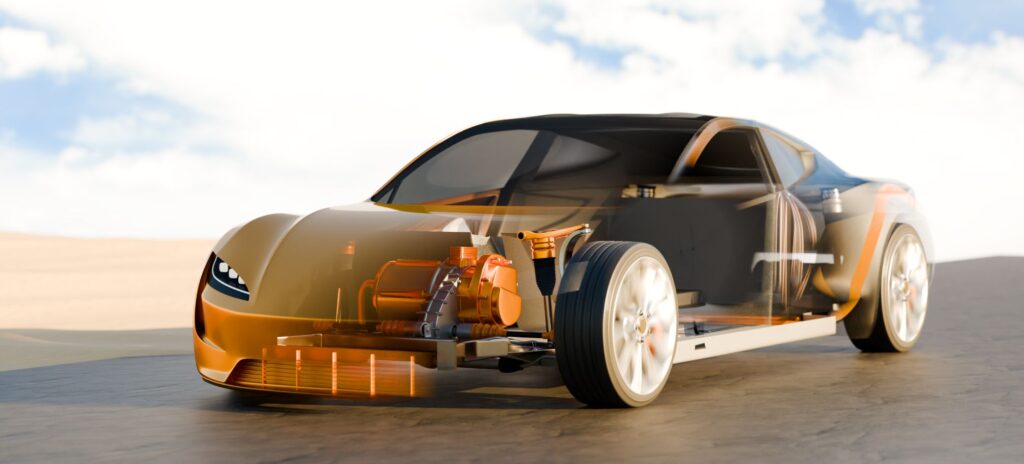
Comprehensive Documentation for Series-Parallel Hybrid Electric Vehicle (HEV) Simulation
Table of Contents
- 1 Comprehensive Documentation for Series-Parallel Hybrid Electric Vehicle (HEV) Simulation
- 1.1 Introduction
- 1.2 System Overview
- 1.2.1 What is a Series-Parallel HEV?
- 1.2.2 Purpose of the Simulation
- 1.3 Key Features
- 1.3.1 Dual-Mode Operation (Series & Parallel)
- 1.3.2 Intelligent Energy Management System (EMS)
- 1.3.3 Regenerative Braking and Battery Management
- 1.3.4 Reduced Computational Complexity
- 1.3.5 Cost Savings
- 1.3.6 Faster Time-to-Market
- 1.3.7 Improved Accuracy
- 1.4 Simulation Objectives
- 1.5 Technical Description
- 1.5.1 System Configuration
- 1.5.2 Control Methodology
- 1.6 Advantages of Series-Parallel HEVs
- 1.7 Applications
- 1.7.1 Commercial Vehicles
- 1.7.2 Public Transportation
- 1.7.3 Logistics and Fleet Management
- 1.7.4 Off-Road and Utility Vehicles
- 1.7.5 Research and Development
- 1.7.6 Energy Management and Optimization
- 1.7.7 Regulatory Compliance and Certification
- 1.8 Simulation Benefits
- 1.9 Summary
- 1.10 Future Enhancements
- 1.10.1 Induction Motor
- 1.10.2 Automotive Electrical System Simulation
- 1.10.3 DC/DC Bidirectional Converter
- 1.10.4 PWM Control for Brushless DC
Introduction
Hybrid Electric Vehicles (HEVs) combine electric and internal combustion powertrains to enhance fuel efficiency, reduce emissions, and improve overall performance. This project models a simplified series-parallel HEV, integrating an Interior Permanent Magnet Synchronous Machine (IPMSM) and an Internal Combustion Engine (ICE) for propulsion. The system also includes a high-voltage battery and an electric generator for efficient energy management.
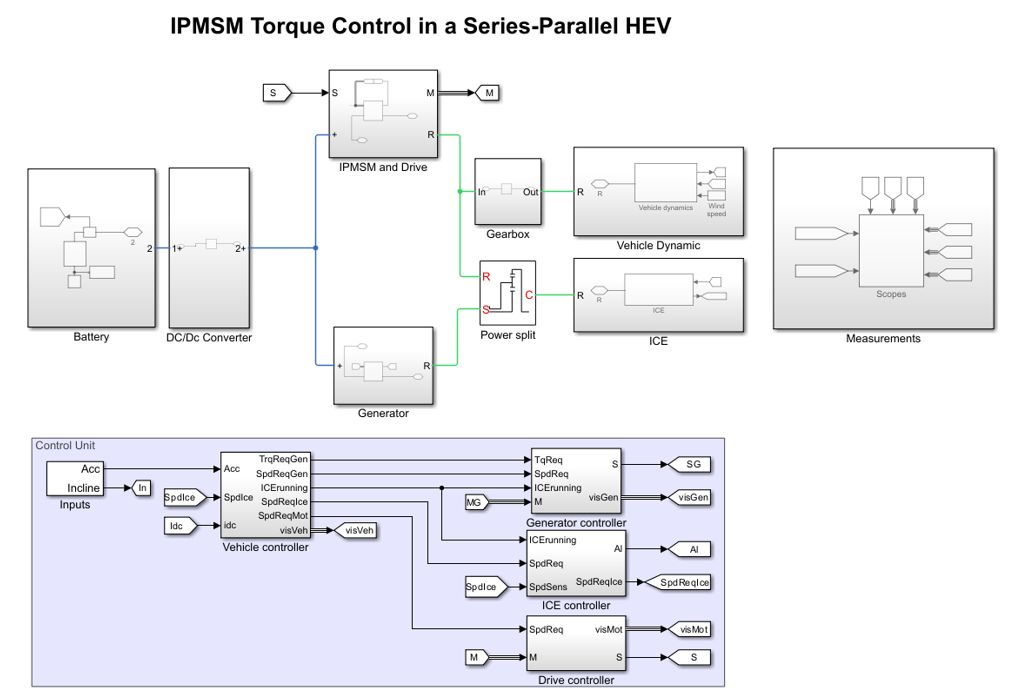
System Overview
What is a Series-Parallel HEV?
A series-parallel HEV can operate in either series mode (where the ICE powers a generator to charge the battery) or parallel mode (where the ICE directly assists in vehicle propulsion). This configuration:
✔ Maximizes fuel efficiency by dynamically switching between series and parallel modes.
✔ Reduces emissions through optimized energy management.
✔ Enhances driving performance with smooth transitions between power sources.
Purpose of the Simulation
This simulation aims to:
✔ Analyze power distribution and energy flow in a series-parallel HEV.
✔ Evaluate real-time torque management strategies for IPMSM and ICE.
✔ Optimize hybrid control strategies for efficiency and performance.
Key Features
Dual-Mode Operation (Series & Parallel)
✔ Series Mode: ICE drives a generator to charge the battery, which powers the electric motor.
✔ Parallel Mode: ICE and IPMSM work together to propel the vehicle.
➡️ HIL/PHIL Benefit: Enables real-time validation of hybrid control transitions.
Intelligent Energy Management System (EMS)
✔ Optimizes power distribution between ICE, battery, and electric motor.
✔ Ensures smooth switching between hybrid operation modes.
➡️ HIL/PHIL Benefit: Allows real-time tuning of EMS strategies for enhanced efficiency.
Regenerative Braking and Battery Management
✔ Recovers braking energy and stores it in the high-voltage battery.
✔ Implements adaptive battery charging and discharging strategies.
➡️ HIL/PHIL Benefit: Tests regenerative braking efficiency before real-world implementation.
Reduced Computational Complexity
Simplified simulations focus on key aspects of the HEV system, reducing computational complexity and enabling faster analysis.
Cost Savings
By identifying potential issues early in the design phase, simulations reduce the cost of prototyping and testing.
Faster Time-to-Market
Simplified simulations accelerate the development process, enabling faster product launches.
Improved Accuracy
Provides precise and repeatable test conditions, ensuring reliable results.
Simulation Objectives
This simulation helps evaluate:
✔ Dynamic energy transitions in series-parallel HEVs.
✔ Impact of hybrid mode switching on vehicle efficiency.
✔ Real-time control of battery charging, regenerative braking, and torque distribution.
➡️ HIL/PHIL Benefit: Provides a safe and controlled environment for validating hybrid vehicle performance.
Technical Description
System Configuration
- Primary Power Sources: ICE and IPMSM for hybrid propulsion.
- Energy Storage: High-voltage battery for electric drive and regenerative energy storage.
- Energy Conversion: Electric generator for battery charging and inverter for motor control.
- Power Management: Intelligent EMS for dynamic power allocation.
Control Methodology
- Hybrid Mode Switching: Automatic transition between series and parallel modes based on demand.
- Torque Management: Optimized distribution of power between ICE and electric motor.
- Battery Control: Efficient charging, discharging, and thermal management.
➡️ HIL/PHIL Benefit: Ensures real-time testing of control strategies before deployment in actual vehicles.
Advantages of Series-Parallel HEVs
✔ Improved Fuel Efficiency: ICE operates optimally in both modes.
✔ Reduced Emissions: Lower reliance on fossil fuels during electric-mode driving.
✔ Enhanced Performance: Smooth and intelligent power distribution.
➡️ HIL/PHIL Benefit: Allows fine-tuning of energy strategies for real-world applications.
Applications
- Vehicle Design and Optimization: Simplified simulations are used to design and optimize parallel HEV systems, ensuring efficient power distribution between the ICE and electric motor.
- Fuel Efficiency Analysis: Simulations help analyze and optimize fuel efficiency, reducing operational costs and emissions.
- Performance Testing: Simplified simulations evaluate the performance of parallel HEVs under various driving conditions, ensuring smooth and reliable operation.
Commercial Vehicles
- Hybrid Buses: Simplified simulations are used to design and optimize parallel HEV systems for hybrid buses, improving fuel efficiency and reducing emissions in urban environments.
- Delivery Trucks and Vans: Simulations help analyze the performance of parallel HEVs in delivery trucks and vans, optimizing energy management for stop-and-go driving conditions.
Public Transportation
- Hybrid Trains and Trams: Simplified simulations are used to design and optimize parallel HEV systems for hybrid trains and trams, improving energy efficiency and reducing emissions.
- Shuttle Services: Simulations help analyze the performance of parallel HEVs in shuttle services, optimizing energy management for frequent starts and stops.
Logistics and Fleet Management
- Fleet Optimization: Simplified simulations are used to optimize the performance and energy management of parallel HEVs in logistics fleets, reducing fuel consumption and operational costs.
- Route Planning: Simulations help analyze the impact of different routes and driving conditions on the performance of parallel HEVs, optimizing route planning for efficiency.
Off-Road and Utility Vehicles
- Hybrid Construction Equipment: Simplified simulations are used to design and optimize parallel HEV systems for hybrid construction equipment, improving fuel efficiency and reducing emissions.
- Agricultural Machinery: Simulations help analyze the performance of parallel HEVs in agricultural machinery, optimizing energy management for varying load conditions.
Research and Development
- Prototype Testing: Simplified simulations are used to test and validate parallel HEV prototypes, reducing the need for physical testing and accelerating development.
- Control Strategy Development: Simulations help develop and optimize control algorithms for parallel HEVs, ensuring efficient and reliable operation.
- Fault Analysis: Simulations help study the behavior of parallel HEVs under fault conditions, improving system reliability and safety.
Energy Management and Optimization
- Battery Integration: Simplified simulations help optimize the integration of batteries in parallel HEVs, ensuring efficient energy management and range optimization.
- Regenerative Braking: Simulations evaluate the effectiveness of regenerative braking systems in recovering energy and improving overall efficiency.
Regulatory Compliance and Certification
- Emissions and Efficiency Testing: Simplified simulations replicate regulatory driving cycles to ensure compliance with emissions and efficiency standards.
- Safety Testing: Simulations evaluate the performance of parallel HEVs under crash and safety test conditions, ensuring compliance with safety regulations.
- Homologation Testing: Simulations support the homologation process by providing data for regulatory certification.
➡️ HIL/PHIL Benefit: Ensures accurate simulation of diverse HEV applications.
Simulation Benefits
With this simulation, users can:
✔ Analyze energy flow and power transitions in a hybrid system.
✔ Optimize hybrid control strategies for improved efficiency.
✔ Evaluate battery and regenerative braking performance.
➡️ HIL/PHIL Benefit: Ensures accurate, real-time testing before hardware implementation.
Summary
The Series-Parallel HEV Simulation provides a robust framework for studying hybrid power distribution, energy efficiency, and torque management. Impedyme’s HIL and PHIL solutions enhance the development process:
| Development Stage | Impedyme’s Contribution |
|---|---|
| Hybrid Mode Transition Optimization | HIL-based validation of mode-switching strategies |
| Torque Management | PHIL simulation of real-world powertrain conditions |
| Battery & Regenerative Braking Testing | Real-time validation of charging and braking efficiency |
| Full-Vehicle Validation | PHIL-driven testing under dynamic driving scenarios |
Future Enhancements
✔ Integration of AI-based predictive hybrid control.
✔ Optimization of battery longevity and energy usage.
✔ Advanced thermal management for hybrid components.
The Series-Parallel HEV Simulation serves as a critical tool for developing next-generation hybrid vehicles. With Impedyme’s HIL/PHIL solutions, engineers can optimize energy management, improve vehicle efficiency, and validate hybrid control strategies before real-world deployment.
